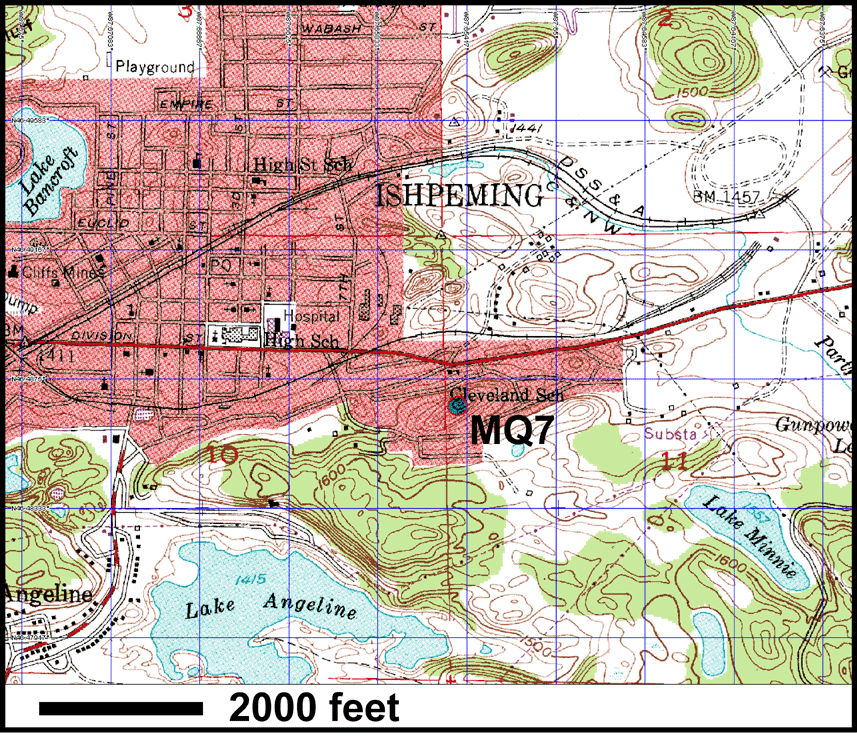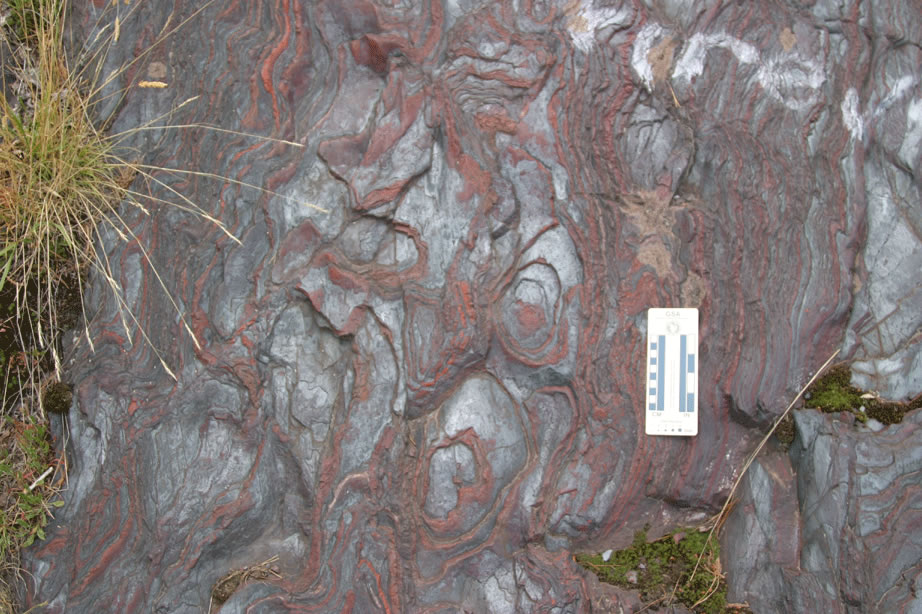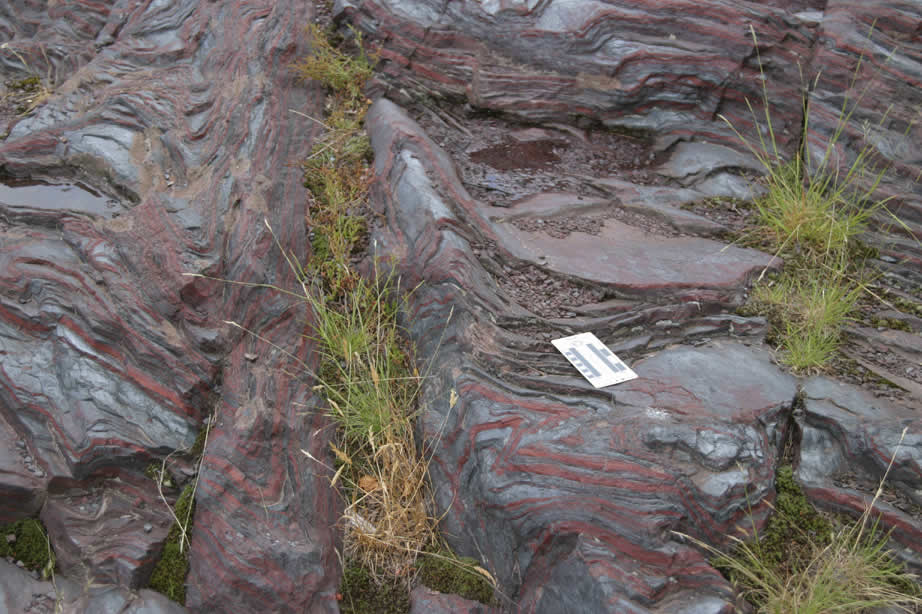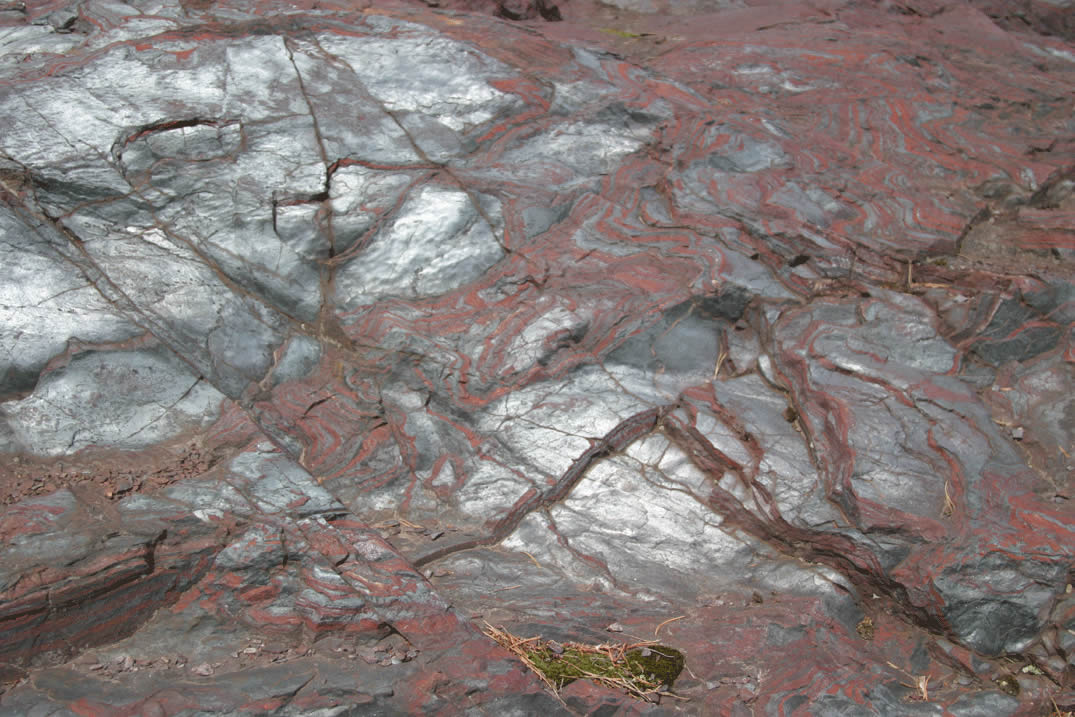




Our next stop will be one that is extremely hard to find, like a hidden treasure. Jasper's Knob has been deemed as the world's largest gemstone, yet not many visit. It is located in the city of Ishpeming, MI.
We had to park on Jasper St., a small residential area. A small knee high stone wall is to the north with a narrow stone stairway in the middle. The stairs lead to a well worn path through the woods and up a fairly steep hill about 250 yards. The hill is approximately 375 feet above the street.
Here is a close up of the map at the left here of its exact location.
The rock here is commonly known as jaspilite. The openly exposed surface is about 100 by 75 feet.
Jasper Knob is part of the Negaunee Iron Formation, which is part of the precambrian. The formation here is alternating folded thin beds and lenses of steel-gray or black specular hematite, and bright red chert.
Here we see the folded thin layers.
In this photo we see a biaxial folding, causing small little domes and lenses in the layering. They were then shaved off to expose the layers below.
The entire area here has experienced a great amount of folding and deformation. According to a guidebook by William F. Cannon of the USGS, there are two theories explaining the origin of the jaspiitic iron formation. (link to reference in big black book stop4)
One theory states a siderite-chert formation had oxidized and recrystallized to specularite-quartz during the Penokean orogeny and through metamorphism.
The other theory states that the rock here at Jasper Knob was instead depositional and/or modified by depositional oxides.
Here we can see the intense folding of the specular hematite and red chert. There are folds within folds.
Here in this photo we can see the bright shine of a plane of specular hematite.
 You are at MQ7.
You are at MQ7.
![]()
MQ1 |
MQ2 |
MQ3 |
MQ4 |
MQ5 |
|
MQ6 |
MQ7 |
MQ8 |
MQ9 |
MQ10 |
| Tours | Photos | Videos | References | Maps | MA Home | Home |